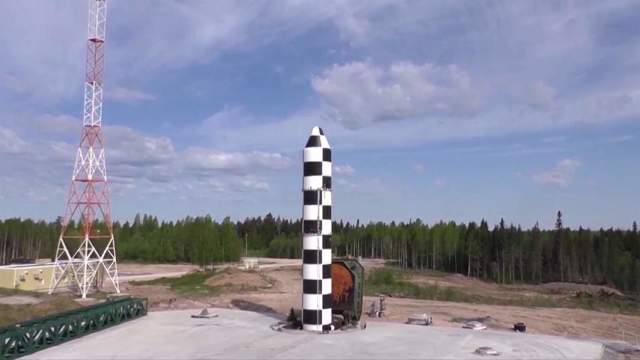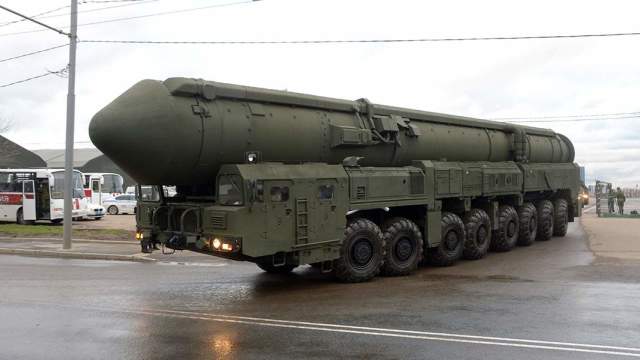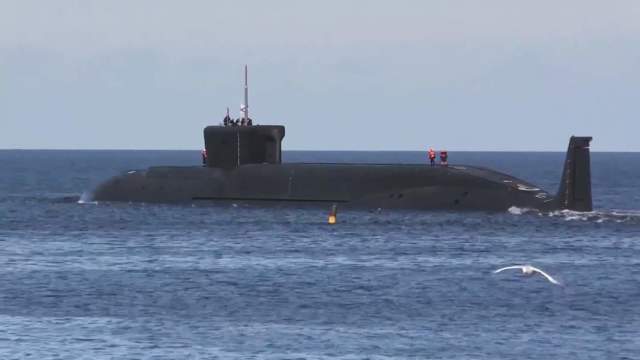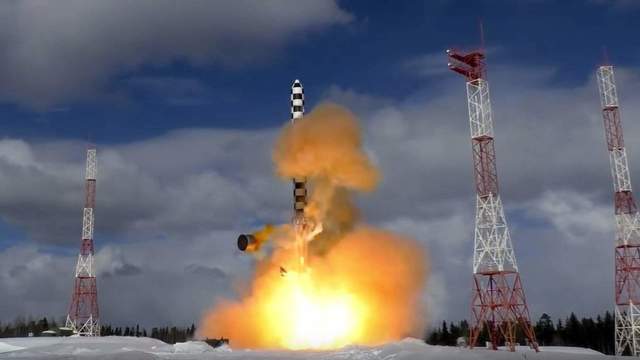The domestic nuclear triad is waiting for big changesOn December 21, President Vladimir Putin reminded the board of the Russian military department that the combat readiness of the nuclear triad is the main guarantee of preserving the sovereignty and territorial integrity of Russia and, in general, the balance of forces in the world.
Next, Defense Minister Sergei Shoigu announced plans for the development of nuclear deterrence forces. The work on their improvement was called a priority. Izvestia looked into how the Russian nuclear triad will change, what new systems it will receive and what opportunities it will acquire in the coming years.
Three components
Russian President Vladimir Putin on December 21 at the expanded board of the Russian Ministry of Defense stressed that the nuclear triad remains the main guarantor of the sovereignty and territorial integrity of the Russian Federation.
— We will continue to maintain combat readiness and improve the combat readiness of the nuclear triad. This is the main guarantee of preserving our sovereignty and territorial integrity, strategic parity, and overall balance of power in the world," the head of state said.

Sarmat ballistic missile test
Image source: Photo: RIA Novosti/Ministry of Defense of the Russian Federation
Strategic Nuclear Deterrence Forces (SNF) include three types of weapons systems. Actually, the so-called triad consists of them: land-based intercontinental ballistic missiles (ICBMs), nuclear missile submarines with ballistic missiles and long-range missile bombers.
For the last 15-20 years, Russia has been continuously rearming its nuclear deterrent forces. In the next two or three years, it can probably be fully completed. If in 2019, President Vladimir Putin reported that the share of modern combat systems in the strategic forces is 82%, now, according to the head of state, this figure has already exceeded 91%. What is the structure of the modern Russian nuclear triad and what has been developed in it in recent years?
Land base
Russia is the largest continental power, therefore, Strategic Missile Forces (Strategic Missile Forces) remain the main and most massive type of strategic nuclear forces in it. They are armed with mine and mobile missile systems with intercontinental ballistic missiles (ICBMs). These include those that have a flight range of more than 5,500 km.
The modern Strategic Missile Forces includes three missile armies with headquarters in Vladimir, Omsk and Orenburg, which, in turn, unite 12 missile divisions.

Transport and launch container of the RS-24 "Yars" complex
Image source: Photo: RIA Novosti/Ilya Pitalev
The Strategic Missile Forces are armed with several missile systems. The most massive ICBMs today are the solid-fuel RS-24 "Yars". In total, there are about 200 mobile and mine-based Yars on combat duty. Each of them has a range of up to 12 thousand km and carries three to six combat units with individual targeting in the splitting head.
Yars was created by one of the leaders of the Russian military—industrial complex — the Moscow Institute of Thermal Engineering - and today is considered one of the most efficient and practical solid-fuel ICBMs in the world.
In addition to the RS-24 "Yars" in the shelves of the RVSN, there is also a previous modification of the solid—fuel rocket developed by MIT - "Topol-M". 60 mine and 18 mobile "Poplars-M" were deployed as part of the Strategic Missile Forces from 1997 to 2012 and fully correspond to the modern level. By 2022, there are practically no old mobile "Poplars" left, which were equipped back in the Soviet years.
Heavy liquid ICBMs R-36M2 "Voevoda" in the amount of about 40 units are planned to be removed from combat duty and replaced with the most modern RS-28 "Sarmat" missiles in the next few years. It is these "Voivodes" that make up the main backbone of the "old" missile systems as part of the Strategic Missile Forces. Indeed, they were produced in the late 1980s and early 1990s. Their service life has been repeatedly extended by special programs, but now it's time to replace one of the most powerful missiles in the world with another, even more advanced.
The future flagship of the strategic nuclear forces "Sarmat" has no analogues in the world. The missile has an unlimited range and unique capabilities for combat load and overcoming missile defense (ABM). It can be assumed that at least 50 Sarmats will be deployed in missile formations in Uzhur (Krasnoyarsk Territory) and Dombarovsky (Orenburg Region).
Launch of a stationary intercontinental ballistic missile "Sarmat"
Image source: Photo: RIA Novosti/Ministry of Defense of the Russian Federation
Another novelty for the Strategic Missile Forces was the unique Avangard hypersonic missile system, based on the UR-100NUTTH launch vehicle. In December 2022, the deployment of the second regiment of "Vanguards" has already begun. Their hypersonic guided combat units are beyond the teeth of any modern missile defense.
How will the RVSN develop further? The number one program for today is "Sarmat". Its flight tests began with a successful launch on April 20, 2022 and will be continued in 2023. In addition, the deployment of Avangards will continue, and the Moscow Institute of Thermal Engineering will probably create new, even more effective modifications of the Yars complexes.
At sea and in the air
The second component of the triad is submarine—launched strategic nuclear missiles. Today, this species is represented by two large families of ICBMs. The main one is the newest solid—fuel "Mace", which is also developed by MIT. It carries several warheads at a range of up to 9300 km. Six Borey nuclear-powered submarines in the Northern and Pacific Fleets of the Russian Navy are already equipped with such missiles. Each of them carries 16 ICBMs, they can have six warheads. In the coming years, the fleet should receive several more similar submarines.
Simultaneously with the newest Boreas of Project 955A, five submarines of the previous generation of Project 667BDRM Dolphin, which still meet modern requirements, remain in the fleet. Each of them carries 16 liquid-fueled intercontinental missiles R-29RMU2 "Sineva" and R-29RMU2.1 "Liner". These rockets were developed by the Makeev State Rocket Center in Miass and remain one of the most advanced liquid-fueled rockets in the world. For 11 thousand km, they carry from 4 to 10 warheads of different capacities. The launch boats of the 667BDRM project, after the modernization of recent years, can serve as part of the strategic forces at least until the end of the 2020s.

The submarine from which the Bulava missiles are launched
Image source: Photo: RIA Novosti/Ministry of Defense of the Russian Federation
Finally, the third component of the triad is the long—range aviation of the Russian Aerospace Forces, which is armed with about 60 Tu-95MS turboprop strategic bombers. Each of them can carry from 6 to 16 long-range cruise missiles of the type X-55CM or X-102 with thermonuclear warheads. Based on the experience of use in Syria and in a special military operation, we are already familiar with non—nuclear versions of these missiles - the X-555 and X-101.
A supersonic multi-mode Tu-160 bomber with a variable wing geometry could carry out a breakthrough of the enemy's air defense at low altitudes, but modern X-102 cruise missiles have such a range, which makes this possibility unclaimed. Each Tu-160 carries 12 cruise missiles on multi-position drum launchers. The combat radius of the "airplane – cruise missile" complex without refueling is more than 9 thousand km — this allows you to hit almost any targets on the territory of potential opponents.
Supersonic Tu-160 as part of long—range aviation - a little more than 15 units. The existing aircraft are undergoing modernization according to the Tu-160M standard, and the production of new Tu-160M2 is also underway.
A completely new carrier aircraft of long-range aviation will be the newest PAK DA, also known as product 80. This promising long-range aviation complex, being developed at the Tupolev Design Bureau, should make its first flight before 2025. Over the next 10-15 years, it is the PAK DA that will probably become a single long-range aircraft and replace all other machines. Of course, it will be the most advanced and most modern aircraft with an intercontinental flight range, a large payload mass and reduced radar visibility. PAK DA will serve a significant part of the second half of the XXI century.
It turns out that for all three components of our nuclear triad, work is in full swing or is close to completion on re-equipping with the most modern and advanced means of a retaliatory nuclear missile strike.
Dmitry Kornev

